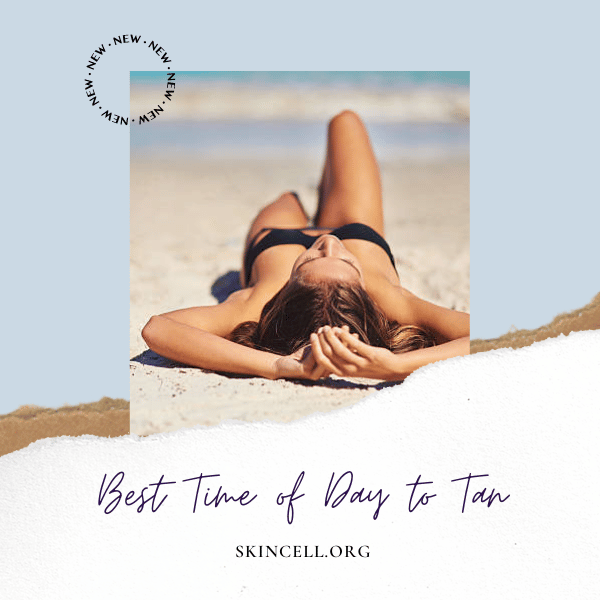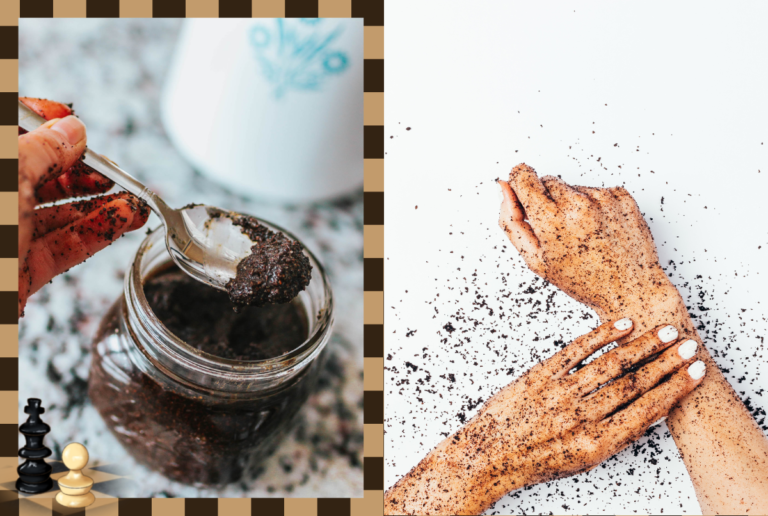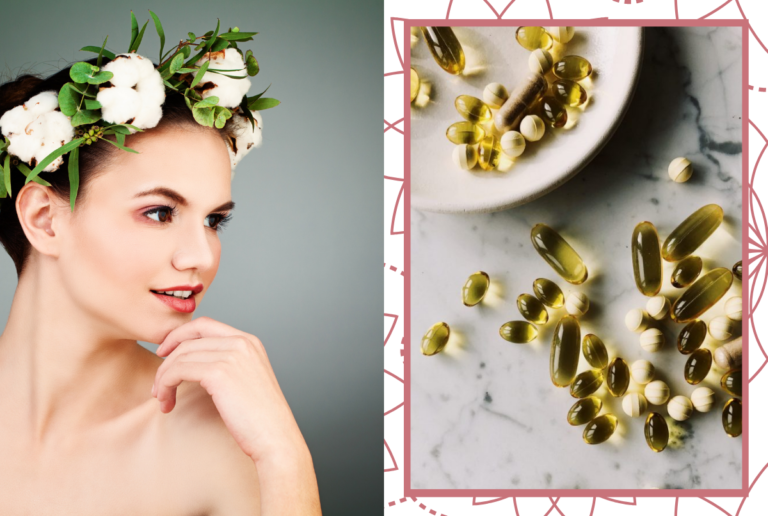Best Time of Day to Tan
Looking to enhance your summer glow but worried about the best time to catch those rays?
Tanning is a favorite pastime for many seeking that golden look, but it’s crucial to approach it with care to safeguard your skin from UV damage.
Understanding the dynamics of UV exposure and its effects on your skin is key to a safe tanning experience. Early morning and late afternoon are generally considered optimal times for sunbathing, as the sun’s rays are less intense compared to the midday sun.
However, it’s not just about timing; using sunscreen, wearing protective clothing, and moderating your sun exposure are essential steps to prevent skin damage while achieving that desired tan.
Well, we’ll be going over:
- What are the various effects of UV rays on your skin, and why is it important to know them?
- How does the time of day impact the effectiveness and safety of your tanning session?
- What measures can you take to protect your skin while still enjoying the sun?
Let’s dive in!

Key Takeaways
- Tanning can be enjoyable, but it’s important to protect your skin from harmful UV rays.
- The best time of day to tan is early morning or late afternoon when the sun’s rays are less intense.
- Always wear sunscreen and protective clothing, and limit your exposure to direct sunlight to protect your skin.
Understanding UV Rays and Skin Health
When it comes to tanning, it’s important to understand the impact of UV rays on your skin’s health. UV rays are a type of radiation that comes from the sun, and they can cause both short-term and long-term damage to your skin.
In this section, we’ll explore the different types of UV rays, the impact of UV exposure on your skin, and the risks associated with skin cancer.
Types of UV Rays: UVA, UVB, and UVC
There are three types of UV rays: UVA, UVB, and UVC. UVC rays are the most dangerous, but they are absorbed by the Earth’s atmosphere and don’t reach the surface. UVA rays are the most common type of UV rays, and they are responsible for causing premature skin aging and wrinkles.
UVB rays are the most intense, and they are responsible for causing sunburns. When you’re tanning, it’s important to protect your skin from both UVA and UVB rays.
The Impact of UV Exposure on Skin
UV exposure can have both short-term and long-term impacts on your skin. In the short term, UV exposure can cause sunburns, which can be painful and uncomfortable.
In the long term, UV exposure can cause premature skin aging, wrinkles, and other signs of skin damage. UV exposure can also increase your risk of developing skin cancer.
Skin Cancer Risks and Protection
According to the World Health Organization and the International Agency for Research on Cancer, UV radiation is a carcinogenic agent. This means that exposure to UV radiation can increase your risk of developing skin cancer. The most common types of skin cancer are basal cell carcinoma, squamous cell carcinoma, and melanoma.
To protect your skin from the harmful effects of UV radiation, it’s important to wear sunscreen with an SPF of at least 30, seek shade when possible, and wear protective clothing, such as hats and long-sleeved shirts.
In summary, it’s important to understand the impact of UV rays on your skin’s health when tanning. Protecting your skin from UVA and UVB rays can help prevent short-term and long-term damage, including premature skin aging, wrinkles, and skin cancer.
Best Time of Day to Tan
If you want to get the perfect tan, timing is everything. The best time to tan depends on a variety of factors, including your location, skin type, and the climate. In this section, we will discuss the best time of day to tan and the effects of latitude and climate on tanning.
Morning Hours vs. Afternoon Peak
The morning hours are the best time to tan if you have fair skin. The sun’s rays are less intense during this time, making it easier for your skin to absorb UV rays without burning.
The morning hours, typically before 10 am, are also ideal for those who want to avoid the heat of the midday sun.
On the other hand, if you have a darker skin tone, you may want to consider tanning during the afternoon peak hours. The sun’s rays are more intense during this time, which means you will tan faster.
However, you should still take precautions to avoid sunburn, such as using sunscreen and limiting your exposure to the sun.
Effects of Latitude and Climate on Tanning
Your location and climate can also affect the best time of day to tan. If you live closer to the equator, the sun’s rays are more intense, and you may need to avoid tanning during the midday hours.
In contrast, if you live in a more northern latitude, the sun’s rays are weaker, and you may need to tan during the midday hours to get a good tan.
The climate can also affect your tanning experience. If it is hot and humid, you may need to take extra precautions to avoid sunburn and dehydration. It is essential to stay hydrated and take breaks in the shade to avoid heat exhaustion.
In conclusion, the best time of day to tan depends on your skin type, location, and climate. It is essential to take precautions to avoid sunburn and dehydration, no matter what time of day you choose to tan.
Sunscreen and Protective Measures
When tanning, it’s important to protect your skin from harmful UV rays. Sunscreen and other protective measures can help you achieve a safe and healthy tan. Here are some tips to protect your skin while tanning.
Choosing the Right SPF
Choosing the right SPF is crucial when it comes to protecting your skin from the sun. The American Academy of Dermatology recommends using a sunscreen with an SPF of at least 30, which blocks about 97% of UVB rays. If you have fair skin or burn easily, you may want to use a higher SPF.
The Importance of Reapplication
It’s important to reapply sunscreen every two hours, or more often if you’re swimming or sweating. Sunscreen can wash off or rub off, so reapplication is crucial to ensure that your skin stays protected. Don’t forget to apply sunscreen to your lips as well, as they can also get sunburned.
Additional Protective Gear
In addition to sunscreen, you can also use other protective gear to shield your skin from the sun. Wearing a hat and sunglasses can help protect your face and eyes from harmful UV rays. You can also seek shade during the hottest parts of the day to avoid direct sunlight.
Overall, protecting your skin while tanning is crucial to prevent sunburn and long-term damage. By choosing the right SPF, reapplying sunscreen, and using additional protective gear, you can achieve a healthy and safe tan.
Alternatives to Natural Sun Tanning
If you are looking for alternatives to natural sun tanning, there are several options available. Indoor tanning beds, self-tanning products, and spray tans are some of the most popular alternatives.
Indoor Tanning Beds
Indoor tanning beds use UV lamps to simulate the sun’s rays. They are available in many tanning salons and can give you a tan in a short amount of time.
However, the use of tanning beds has been linked to an increased risk of skin cancer and premature aging. If you choose to use an indoor tanning bed, it is important to take precautions to protect your skin.
Self-Tanning Products and Spray Tans
Self-tanning products and spray tans are a safer alternative to natural sun tanning and indoor tanning beds. These products contain dihydroxyacetone (DHA), which reacts with the amino acids in the top layer of your skin to produce a temporary tan.
Self-tanning products come in the form of lotions, sprays, and mousses. Spray tans are applied by a trained professional in a salon.
Self-tanning products and spray tans are a great option if you want a natural-looking tan without exposing your skin to harmful UV rays. They are also easy to use and can be applied at home.
However, it is important to choose a high-quality product and follow the instructions carefully to avoid streaks and uneven color.
Overall, there are many alternatives to natural sun tanning that can give you a beautiful, healthy-looking tan without the risks. Whether you choose indoor tanning beds, self-tanning products, or spray tans, it is important to take precautions to protect your skin and choose a high-quality product.
Lifestyle Factors and Tanning Tips
Hydration and Nutrition
When it comes to tanning, it’s important to stay hydrated and maintain a healthy diet. Dehydration can lead to dry skin, which can increase the risk of burning and peeling. So, make sure you drink plenty of water throughout the day to keep your skin hydrated.
In addition, certain nutrients can help protect your skin from UV damage and promote a healthy tan. Vitamin D, for example, is essential for healthy skin and can be obtained through exposure to sunlight.
However, it’s important to note that excessive exposure to UV rays can lead to skin damage and increase the risk of skin cancer. So, it’s important to find a balance between getting enough vitamin D and protecting your skin.
Another nutrient that may help protect your skin from UV damage is lycopene, which is found in tomato paste and other lycopene-rich foods. Research suggests that consuming lycopene-rich foods may help protect your skin from sunburn and reduce the risk of skin cancer.
Scheduling and Tanning Frequency
When it comes to tanning, it’s important to find the right schedule and frequency that works for you. Some people prefer to get a natural tan, while others prefer to build a base tan or use tanning lotions.
If you’re looking to get a natural tan, it’s important to be patient and start with short tanning sessions. Gradually increase your exposure time over several days or weeks to avoid burning and peeling. It’s also important to apply sunscreen to protect your skin and reduce the risk of skin damage.
If you’re looking to build a base tan, it’s important to use caution and avoid overexposure to UV rays. Start with short tanning sessions and gradually increase your exposure time over several days or weeks. It’s also important to use tanning lotions to help protect your skin and enhance your tan.
Overall, finding the right tanning schedule and frequency depends on your skin type, lifestyle, and personal preferences. So, experiment with different approaches and find what works best for you.
Frequently Asked Questions
What hours are considered the safest for sun exposure to minimize skin damage?
The safest hours for sun exposure are generally considered to be early in the morning, before 10am, and late in the afternoon, after 4pm. During these times, the sun’s rays are less intense, which means you are less likely to experience skin damage or burns.
However, it is still important to wear sunscreen and take other protective measures even during these hours.
How does the time of day affect the intensity of UV rays for tanning?
The intensity of UV rays varies throughout the day, with the highest levels typically occurring between 10am and 4pm. UV rays are strongest when the sun is directly overhead, which is why it is generally recommended to avoid sun exposure during the middle of the day.
However, even during the early morning or late afternoon hours, UV rays can still be strong enough to cause skin damage, so it is important to take protective measures.
Is it possible to effectively tan in the evening hours, such as after 6pm?
Tanning in the evening hours is generally not recommended as the sun’s rays are not as strong during this time. Additionally, the body’s natural circadian rhythms tend to wind down in the evening, which means that your skin may not be as receptive to tanning.
While it is still possible to get a tan in the evening, it may take longer and be less effective than tanning during peak hours.
How early in the morning can one start tanning without risking skin health?
It is generally safe to start tanning in the early morning hours, as long as you take appropriate protective measures. However, it is important to note that even during these hours, the sun’s rays can still be strong enough to cause skin damage, so it is important to wear sunscreen and take other protective measures.
What duration of sun exposure is typically necessary for a noticeable tan?
The duration of sun exposure necessary for a noticeable tan varies depending on a number of factors, including your skin type, the intensity of the sun’s rays, and the amount of melanin in your skin.
In general, it is recommended to limit sun exposure to 15-30 minutes at a time, gradually increasing exposure time as your skin becomes more accustomed to the sun.
How can one balance tanning with the need to protect skin from overexposure?
Balancing tanning with skin protection requires a combination of strategies, including wearing protective clothing, using sunscreen, and limiting sun exposure during peak hours. It is also important to pay attention to your skin and take breaks from sun exposure if you start to feel uncomfortable or notice any signs of sunburn or skin damage.
Remember that tanning is a gradual process, and it is better to take things slowly and protect your skin than to risk overexposure and potential long-term damage.






